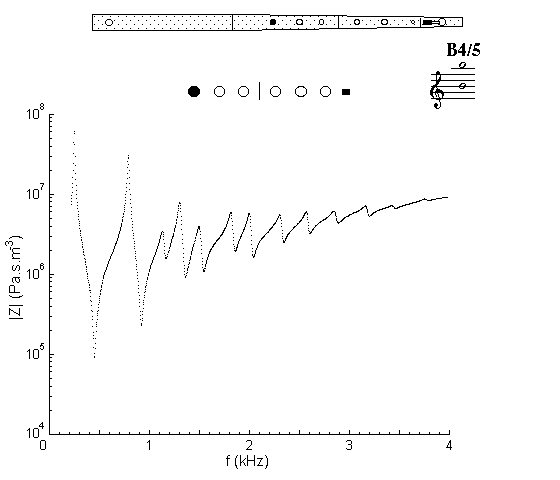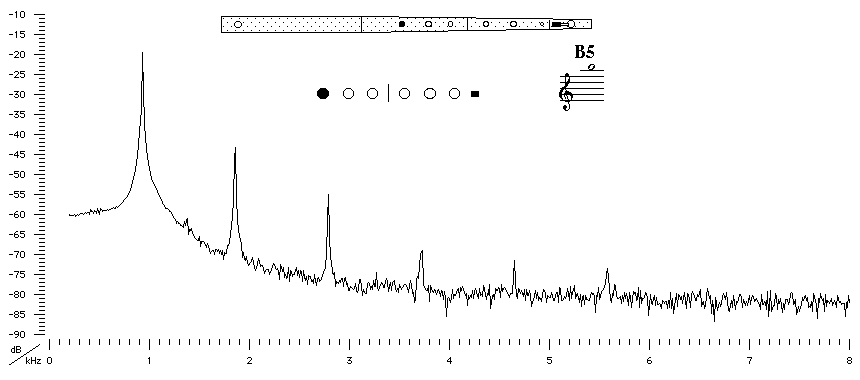| Acoustics of baroque, classical and modern flutes |
baroque flute |
B5 |

|
Acoustic and Fingering Schematic Non-specialist introduction
to acoustic impedance |
From E4 to B4 and E5 to B5, the simple fingerings (i.e. those that do not involve cross-fingering) serve for two notes. The flutist uses the same fingering for B4 and B5, but changes the speed, length and shape of the jet. The absence of cross fingerings allows the second minimum to be harmonic (hence two strong harmonics in the sound spectrum). (Although B4 is in tune, this note must be lipped up.)

Sound spectrum
of a baroque flute played using fingering for B5.
![]()
![]()
![]()
![]() You can hear B5
played by Matthew Ridley.
You can hear B5
played by Matthew Ridley.
| Acoustic measurements are available for these flutes - modern B, modern C, classical C, classical D, classical flared, baroque Sound clips are available for modern B, classical flared and baroque |
To compare flutes, it is easiest to open a separate browser window for each instrument. |